POCO is stepping into the tablet scene with the POCO Pad M1, a device that promises a balance between performance and affordability. But does it manage to stand out in a market crowded with established options? Here’s our full review.
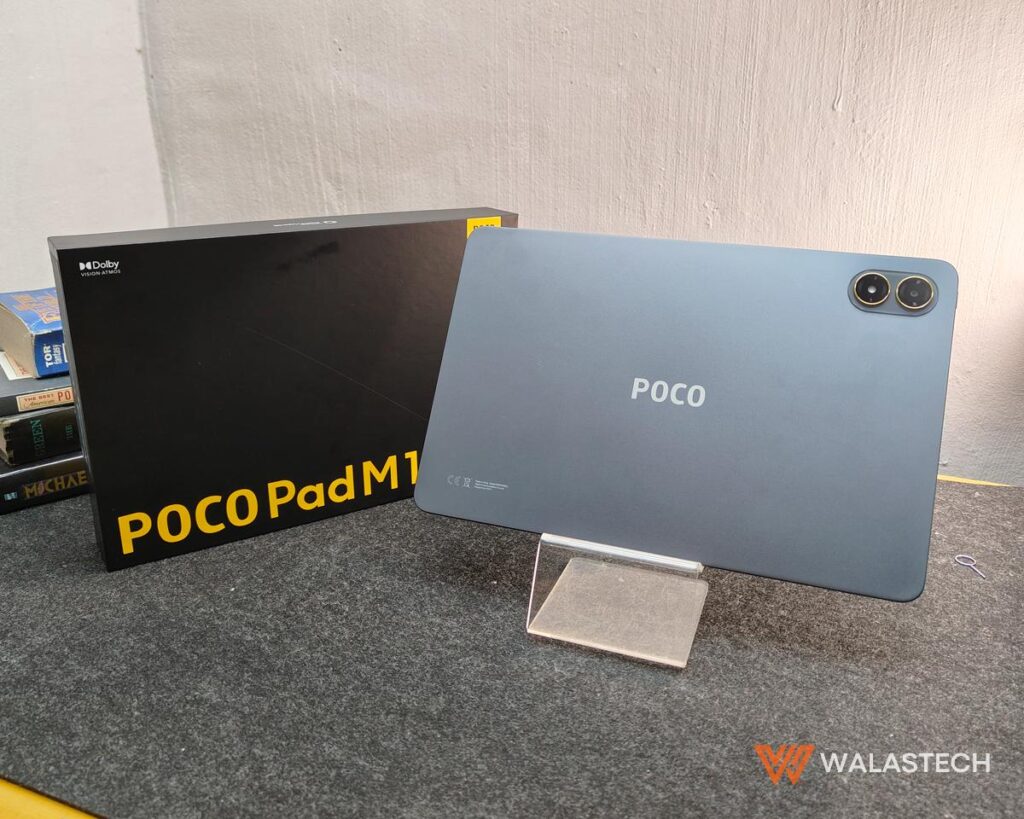
The tablet market has shifted toward larger displays and stronger performance for both school and work. With this trend in mind, the POCO Pad M1 arrives as a device made to handle entertainment, casual gaming, and productivity without moving into the premium price range. It targets students, young professionals, families, and users who need a versatile screen that can adapt to both fun and functional tasks.
From the start, the POCO Pad M1 sets its tone with its tagline: Play to the max. But after looking through its features, it tries to do more than play. The 12.1-inch display, quad speakers with Dolby Atmos, Snapdragon 7s Gen 4, Xiaomi HyperOS, and accessories like the Smart Pen and Keyboard show it is aiming to replace not just other tablets, but possibly even a basic laptop in some setups.
POCO Pad M1 Specifications
- Display: 12.1-inch 2.5K display, 249 ppi, up to 120Hz refresh rate, TÜV Rheinland-certified eye-care display
- Processor: Snapdragon 7s Gen 4 Mobile Platform
- RAM: Not specified (reduced due to pre-installed system apps)
- Storage: Supports up to 2TB expandable storage
- Rear Cameras: 13 MP, f/2.2, 1/3.06-inch
- Selfie Camera: 8 MP, f/2.28, 1/4-inch
- Connectivity: Wi-Fi 6 capable, 3.5mm headphone jack, Xiaomi Interconnectivity features via HyperOS
- Other Features: Quad Dolby Atmos speakers, Dolby Vision, DC dimming, Google Gemini support, Circle to Search, cross-device camera function, accessory support
- OS: Xiaomi HyperOS
- Battery and Fast Charge Tech: 12,000mAh battery, 33W fast charging, supports 27W reverse charging
- Colors: Not specified
The package we got from POCO is just the device itself, a microSD card tray pin, the 33-watt charger, and the USB A to C data and charging cable. No sort of protection included, unless you buy it in its early launch price that comes with a free keyboard case.
POCO Pad M1: Design and Construction
The POCO Pad M1 uses a unibody metal back cover that gives it a sturdy feel without making it bulky. The form factor complements the large display, and it does not feel fragile during handheld use. The side-positioned 3.5mm headphone jack helps users who still prefer wired audio, especially in online classes or work meetings. The quad speaker layout also confirms landscape use as its main orientation, likely meant for gaming and streaming.
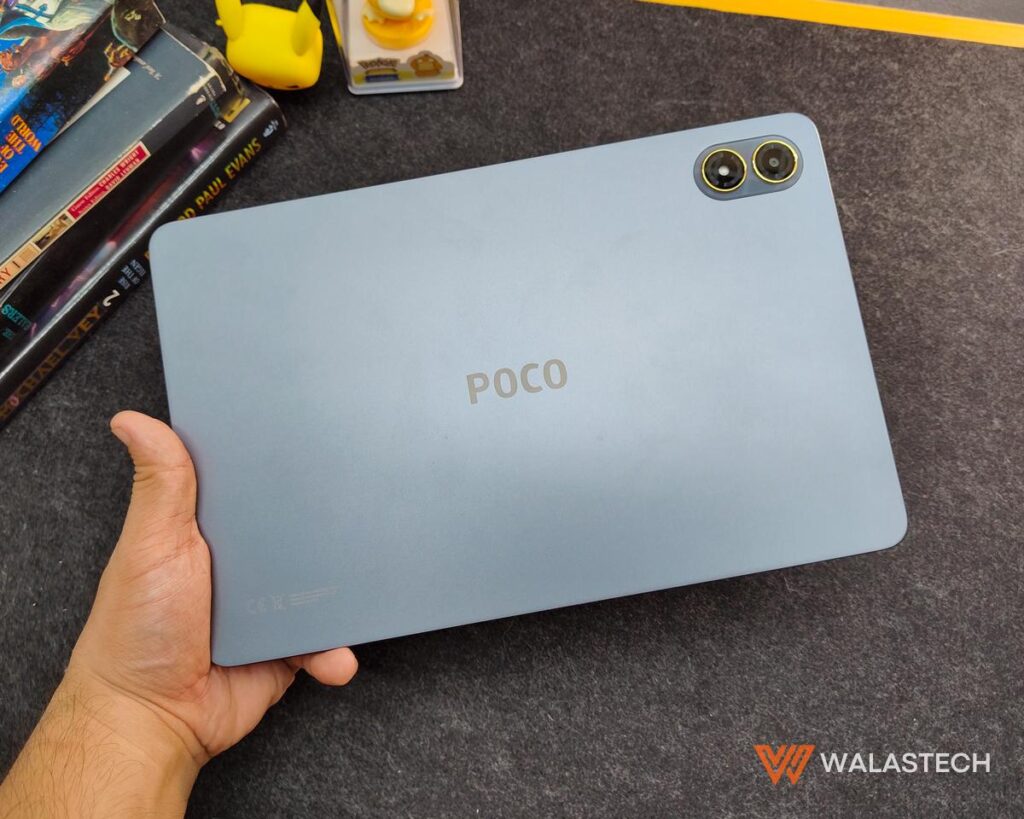
What makes the POCO Pad M1 more flexible is its accessory support. The Smart Pen offers 4,096 levels of pressure sensitivity with low latency, while the keyboard uses key spacing and travel similar to a laptop. Combined with the cover that doubles as a stand, the tablet can shift from media device to note-taking tool or even a typing workstation. This blend supports its Play to the max identity, but it also shows that the POCO Pad M1 is designed to take over tasks usually handled by a laptop.
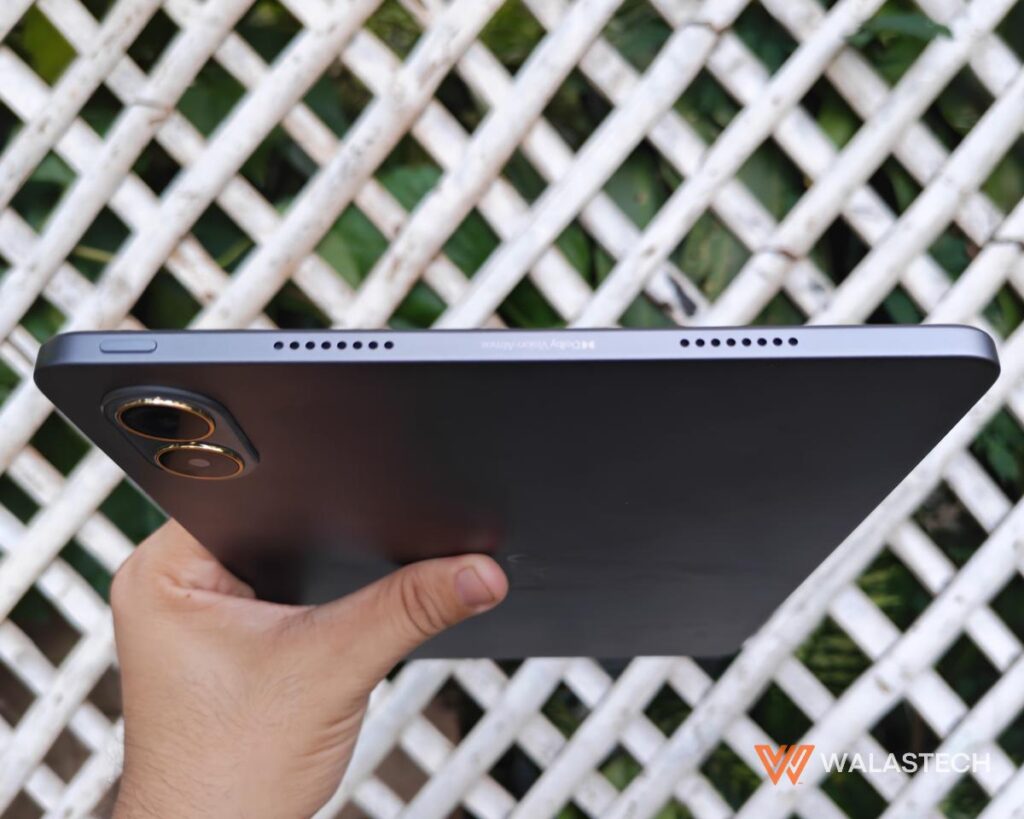

The overall build favors practicality over luxury, which fits the target market. It feels made for school desks, coffee-table usage, and home learning setups.
POCO Pad M1: Display and Audio
The 12.1-inch 2.5K display is one of the most attractive features of the POCO Pad M1. The peak brightness of 600 nits helps indoor use, and the 120Hz refresh rate keeps the UI smooth for scrolling, animations, and supported games. TÜV Rheinland certifications for low blue light, flicker-free use, and circadian-friendly protection make it comfortable for extended screen time — ideal for students working on assignments or binge-watching shows.

Dolby Vision support brings HDR visuals, and in combination with HyperOS, the interface feels fluid with quick transitions between apps. Media consumption clearly sits at the center of this device’s purpose.

Audio completes the package. The quad Dolby Atmos speakers can boost volume by up to 300 percent in speaker mode, which helps when used outdoors or during shared viewing. Hi-Res Audio support and the headphone jack give extra flexibility for both wired and wireless audio setups. The POCO Pad M1 treats display and sound as a combined experience instead of separate features, which strengthens its identity as a personal entertainment hub.
POCO Pad M1: Camera
The POCO Pad M1 includes a straightforward camera setup that supports everyday communication and quick documentation. It features a 13 MP rear camera with an f/2.2 aperture and a 1/3.06-inch sensor, which should handle basic captures, notes, and document scanning with no issue. The front camera is an 8 MP f/2.28 sensor with a 1/4-inch size, which aligns with its primary role for video calls, online meetings, and virtual classes.
Imaging is not the focus of the POCO Pad M1, but the cameras serve well for essential daily tasks. The rear camera works best with decent lighting, while the front camera keeps calls clear enough without pushing for high-resolution selfies. Instead of trying to compete with phone-grade photography, the tablet leans on Xiaomi HyperOS to enhance its camera usability. Through cross-device camera support, users can connect a compatible Xiaomi phone and use its camera during calls or presentations, bypassing any hardware limitations of the tablet itself.
This setup reflects the POCO Pad M1’s core identity: a display and productivity-first device that prioritizes usability over imaging features. In daily use, the cameras provide enough functionality without taking away from what the tablet does best — handling entertainment, learning, and general workloads.
POCO Pad M1: Performance
With 8GB of RAM and 256GB of internal storage, the POCO Pad M1 lands in the mid-range performance zone, giving enough capacity for multitasking, browsing, streaming, office use, and casual gaming. The storage can also be expanded up to 2TB through a memory card, which makes it easier to keep downloaded content, lecture videos, or creative files without worrying about free space.
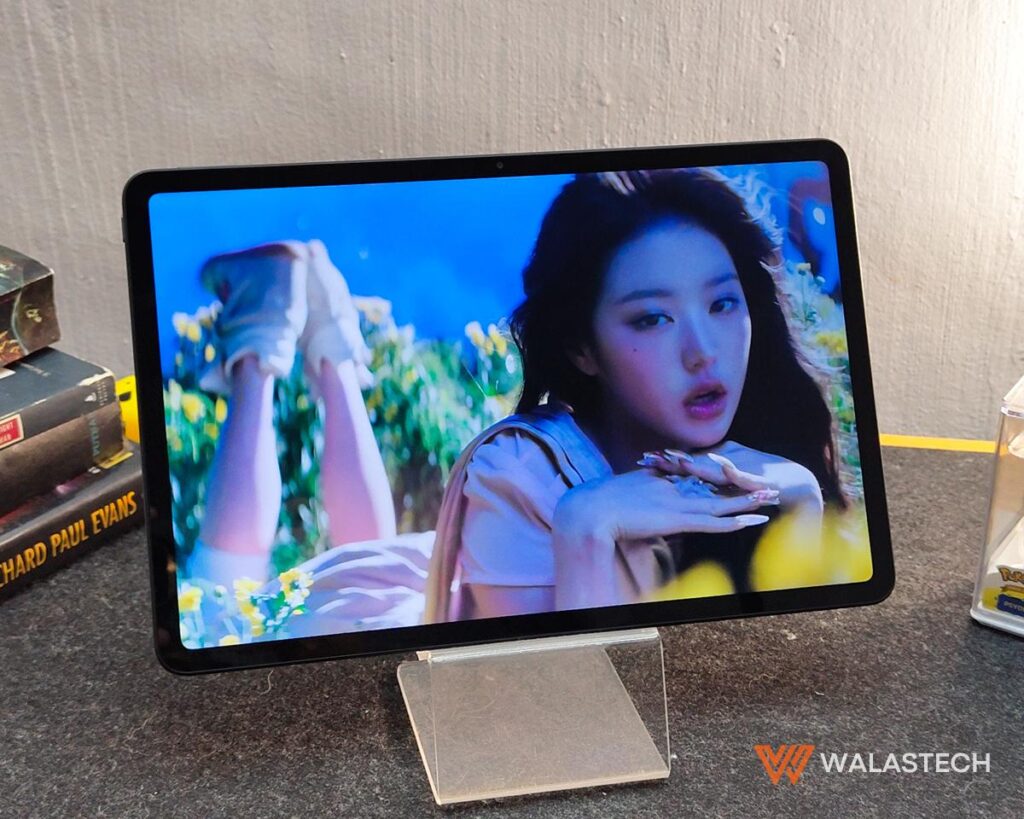
Powering everything is the Snapdragon 7s Gen 4 processor, which reaches around 1.06 million on AnTuTu according to POCO’s internal testing. This suggests smooth general performance without forcing the user to scale down tasks. Paired with Xiaomi HyperOS, animations feel responsive and app switching behaves quickly even with multiple apps open. The combination of 8GB RAM and HyperOS optimization allows most users to jump between media consumption and work tasks without feeling slowed down.
HyperOS also introduces practical functions such as shared clipboard, cross-device file access, call sync, and support for Circle to Search and Google Gemini. These features help the POCO Pad M1 act less like a secondary device and more like an active part of a daily workflow. With Wi-Fi 6 capability available depending on region, the tablet is built to rely heavily on the internet for instructional content, video conferencing, research, and streaming.
The overall performance of the POCO Pad M1 blends stability and convenience rather than chasing benchmark records. It feels tailored for school projects, remote work, slideshows, light gaming, and general web use — which aligns well with the tablet’s purpose as a flexible everyday screen rather than a high-end workstation.
POCO Pad M1: Battery and Charging
The 12,000mAh battery is one of the biggest strengths of the POCO Pad M1. It is currently the largest capacity ever placed in a globally released POCO device. Internal testing shows up to 105.36 hours of music playback and roughly 83 days of standby time. When I used it as a laptop replacement, it showed very minimal levels of battery decrease over a three-day period of bring around and working for a few hours at coffee shops in between events. Today, it’s at around 65 percent from my last charge three days ago. This level of battery endurance allows users to rely on the tablet through full school days, work sessions, or travel without worrying about frequent charging.
Charging is handled by 33W fast charging, which reduces downtime and helps return to use quickly. Even more interesting, the POCO Pad M1 supports 27W reverse wired charging. This turns it into a backup power bank for phones or accessories, expanding its role beyond a typical tablet.
With this battery performance, the POCO Pad M1 fits users who move often — students shifting between classrooms, freelancers working in cafés, or families needing entertainment on road trips. It does not try to be the fastest tablet, but it pushes to be the most reliable one.
The Rundown
The POCO Pad M1 sets itself apart by pairing a large high-refresh-rate display with strong speakers, expandable storage, solid battery life, and HyperOS features that push it beyond basic entertainment. It avoids focusing on cameras and instead positions itself as a media tool, study partner, and productivity screen.
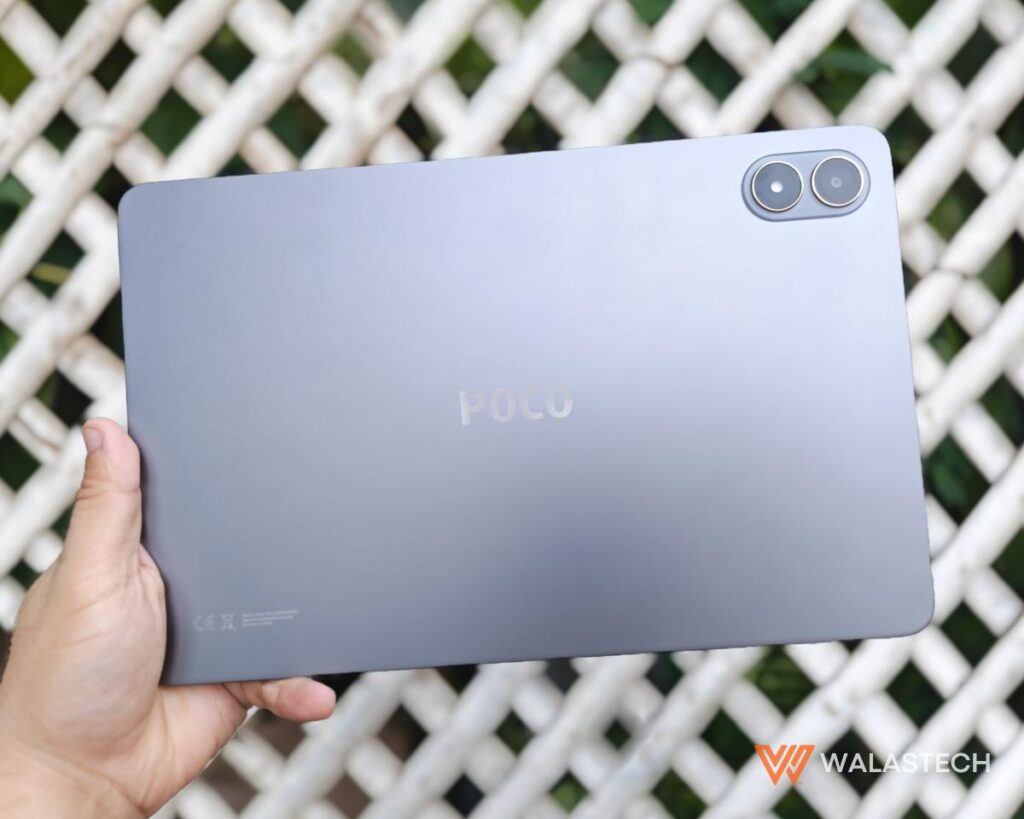
Its goal is clear: become the device that stays in use longest in a day. This tablet fills a space that many users have been waiting for — a tablet that works in both school bags and living room tables, without needing to replace a laptop immediately.
The POCO Pad M1 is available in stores for PHP 15,999, with a launch promo of PHP 12,999 along with a free keyboard case, valid until December 9.








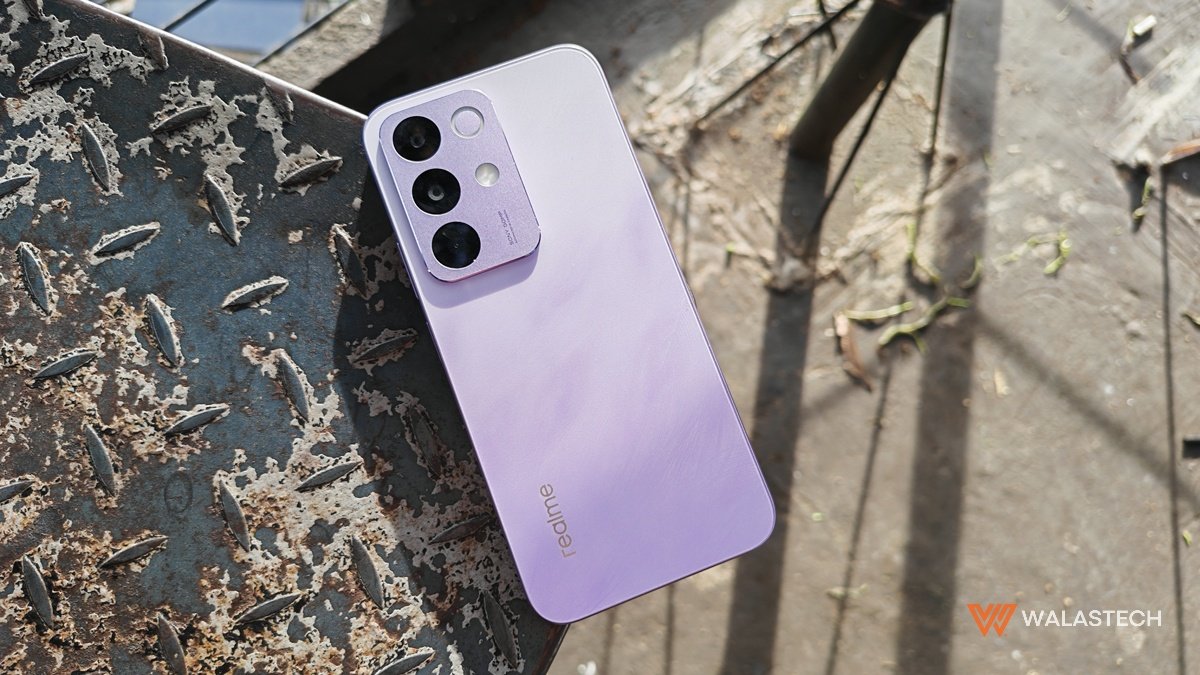

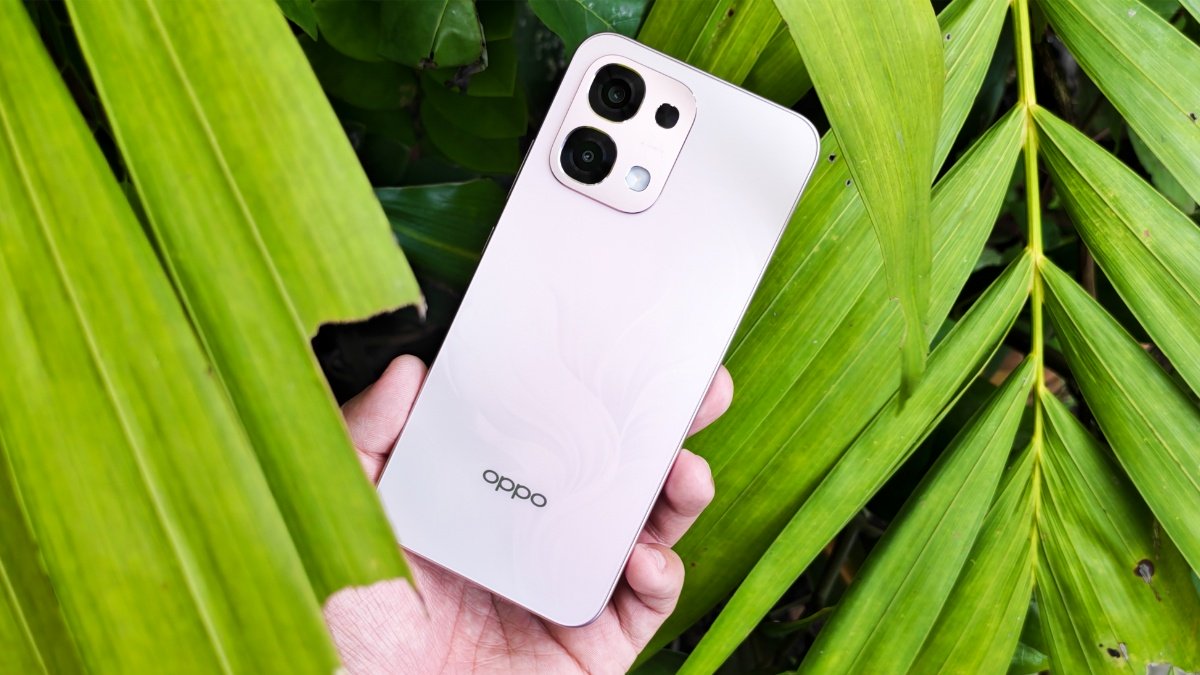


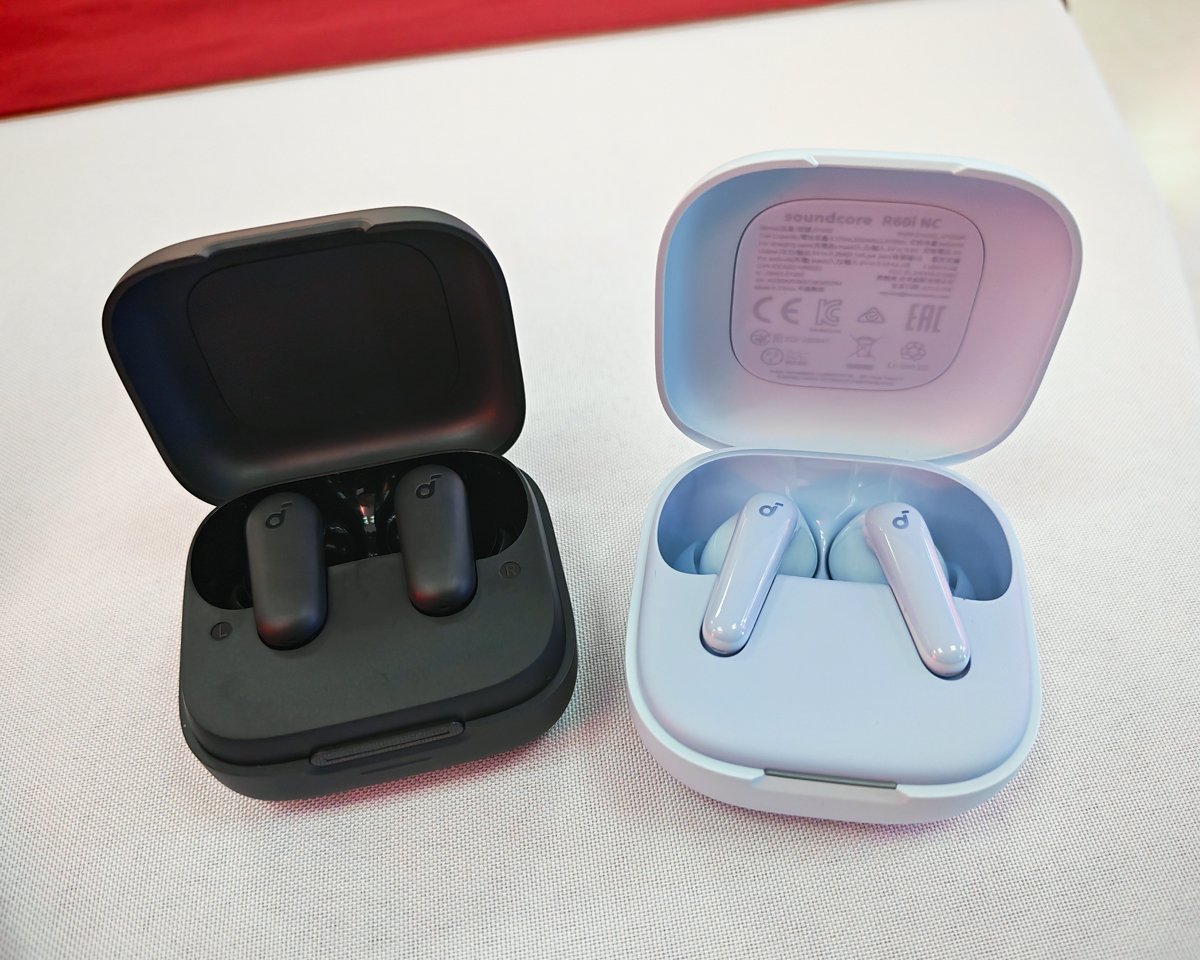

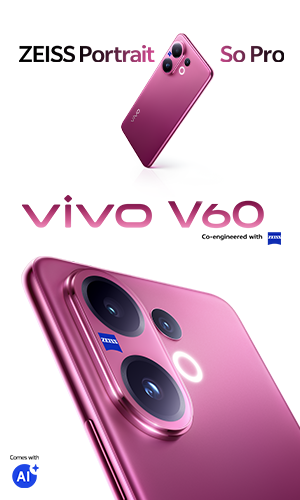



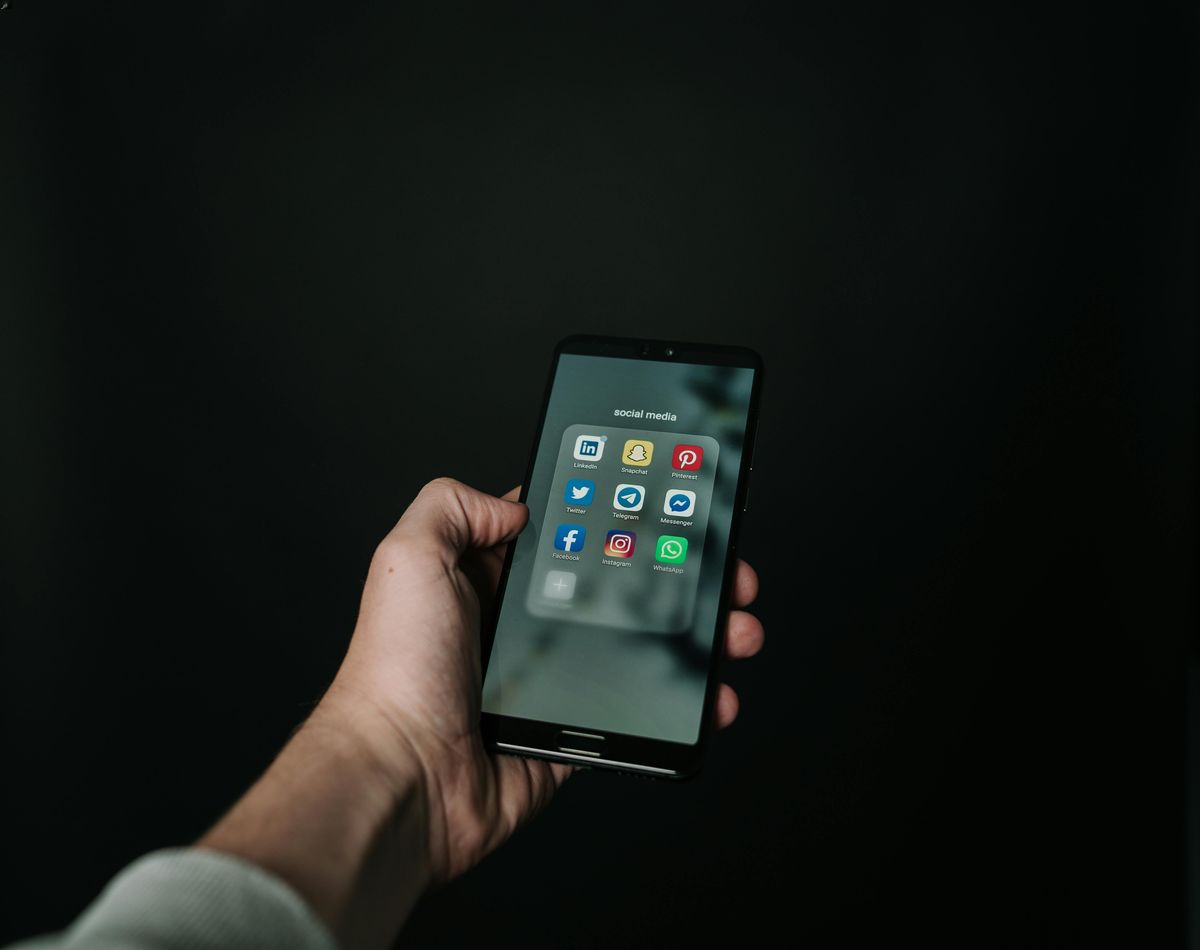

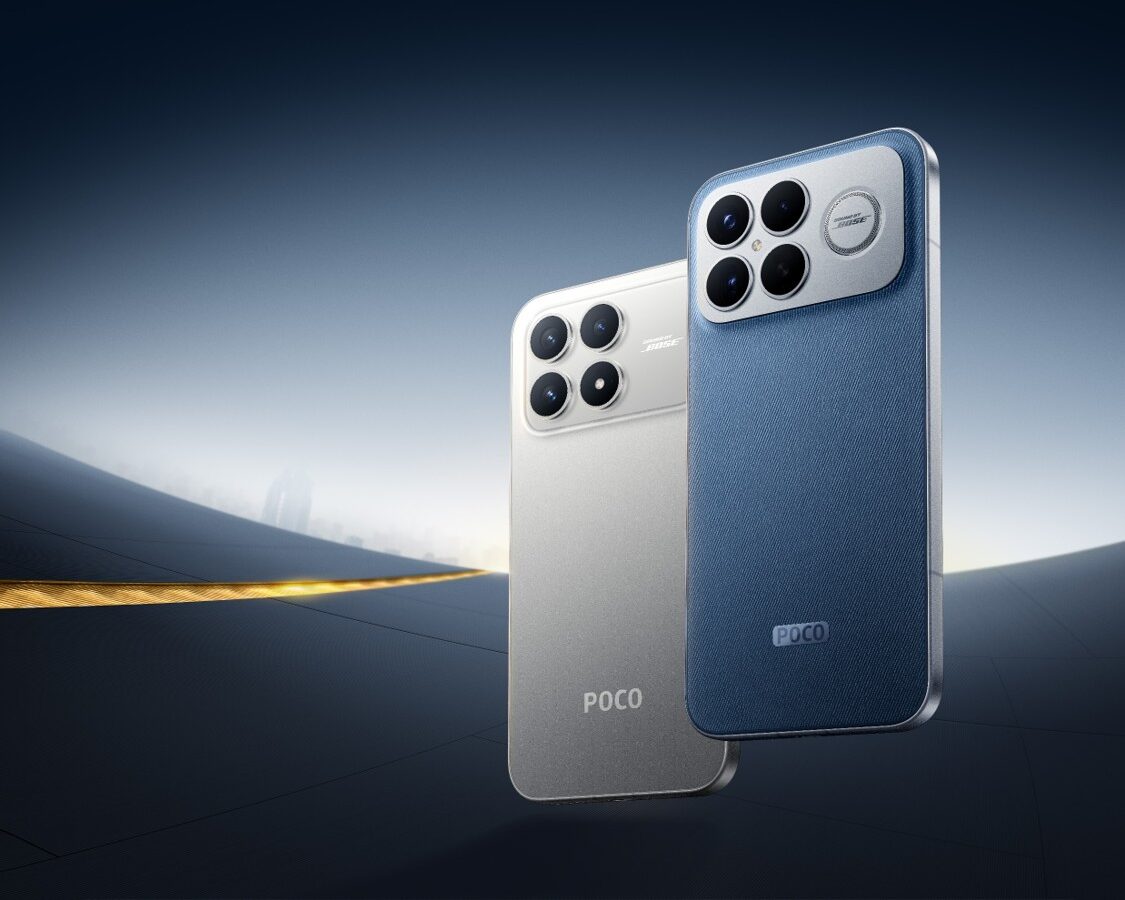
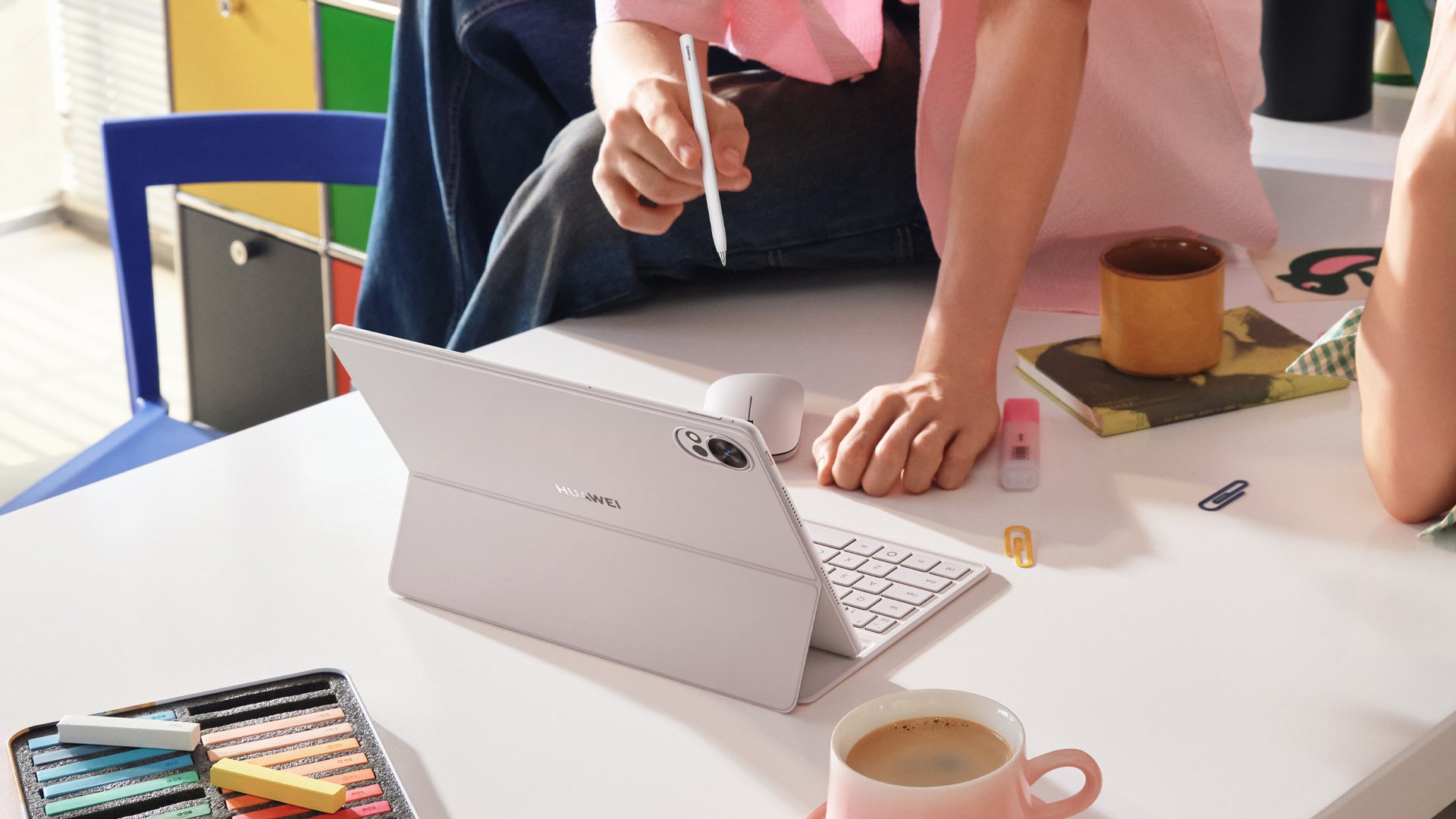

Leave a Reply